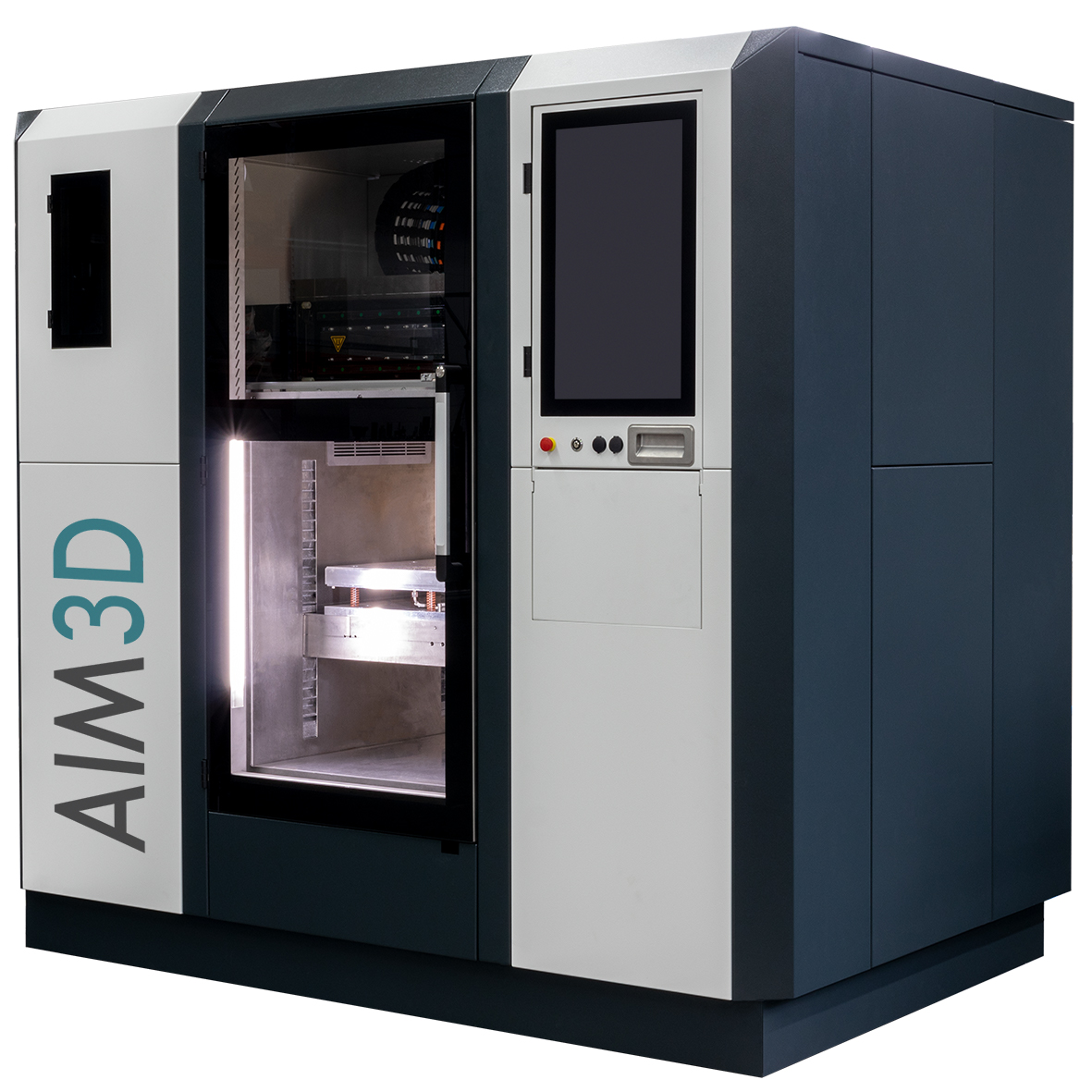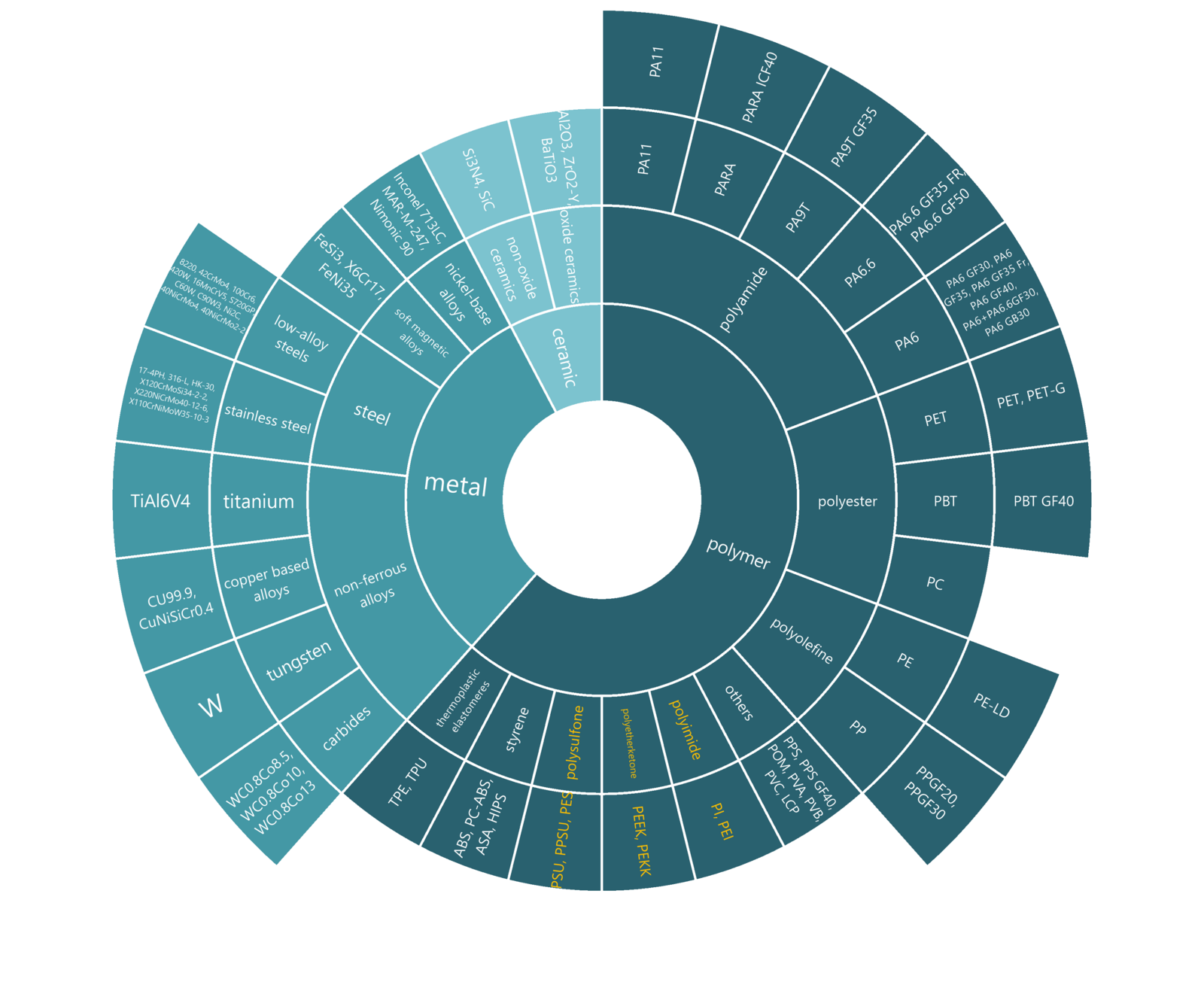The multi-material printer: ExAM 510
The ExAM 510 is the world’s first industrial high-temperature 3D printer that can produce high-performance plastics with the CEM process. The high maximum temperature enables the use of almost any thermoplastic material.
Prototypes or small-series components can be produced out of unfilled or highly filled polymers. For this, you can use cost-efficient injection moulding pellets that are available worldwide. You can thus profit from the wide variety of possible fillers, for example, glass fibres, carbon fibres, mineral fibres, or even materials such as carbon nanotubes, graphite or metals.
You can use up to three extruders to produce components out of various materials (for example, build materials and soluble support material)

FAQ about the ExAM 510
How does the printer work?
How does the printer work?
The ExAM 510 is a pellet-based, or granulate-based, material extrusion printer, a so-called pellet MEX printer. The process is similar to filament printers, but considerably faster and uses pellets that are melted in an extruder screw and then extruded.
How fast is the printer?
How fast is the printer?
Good filament systems usually achieve print speeds of up to 200 mm/s when processing thermoplastics. In comparison, the current version of the ExAM 510 achieves print speeds of up to 500 mm/s at high acceleration rates when processing, for example, PA6 with 30 % glass fibre – and this is even the case with the very precise 0.4 mm printing nozzle. In order to maintain the excellent printing quality, the machine comes at a weight of approximately 3 500 kg and with high-quality linear motor technology and CFRP axes.
Can any type of pellets or granulates be used?
Can any type of pellets or granulates be used?
Our ExAM printers are open material systems. Hence, customers can usually use their own existing materials. In the end, the chosen material dictates the minimum nozzle size, the print speed and the general printability.
Can the machine only print metals or also plastics?
Can the machine only print metals or also plastics?
All our printers are generally able to process all classes of materials. The ExAM 510 is hence able to print plastics, both pure and reinforced, as well as MIM and CIM materials.
What is the difference between the ExAM 255 and the ExAM 510?
What is the difference between the ExAM 255 and the ExAM 510?
The biggest difference between the ExAM 255 and the ExAM 510 is the heating of the build space. Furthermore, the ExAM 510 is considerably faster and can produce larger parts. Due to the indirect heating of the build space, the ExAM 255 is restricted to plastics with a maximum melting point of approximately 320 °C. Please get in touch – we would be happy to give you an initial assessment based on your needs.
What can be said about the expected durability with respect to reinforced plastics?
What can be said about the expected durability with respect to reinforced plastics?
The main element of the ExAM 510 is the extruder, which is constructed in such a manner that all relevant components are hardened. Furthermore, the extruder is designed so that it not only treats the used materials with care, but that the parts that touch these materials are also optimally protected. In the end, the printer can operate for up to 10 000 machine hours before a new extruder, a new hotend or a new extruder screw is needed.
